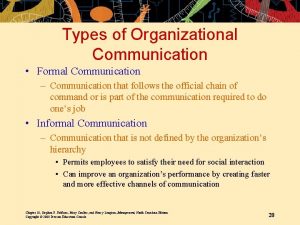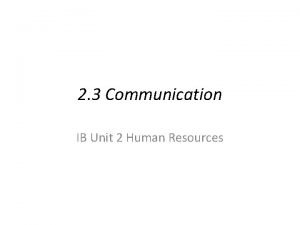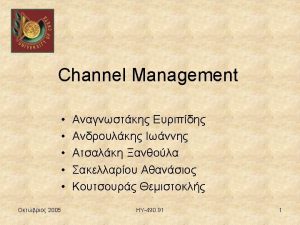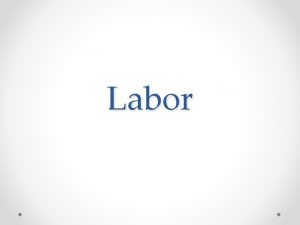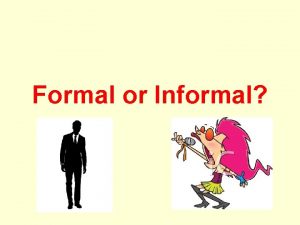Formal and Informal Channels of Communication Communication Formal

















- Slides: 17

Formal and Informal Channels of Communication

Communication

Formal Communication Ø the process of sharing official information with others who need to know it, Ø according to the prescribed patterns depicted in an organization chart

Formal Communication Information Vice President Manager Efforts at coordination Manager Instructions and directives President

Informal Communication l l information shared without any formally imposed obligations or restrictions if an organization’s formal communication represents its skeleton, its informal communication constitutes its central nervous system An organization’s informal channels of communication, based mainly on friendship or acquaintance origin: American Civil War [grapevine telegraphs]


Grapevine Communication Ø Originated during the American Civil war in 1860’s…… Ø The term was used to describe telegraphic lines strung across trees that resembled grapevines Ø Telegraphic communication on those days were not at all reliable

Informal Networks E Y C K H G D C E D C F B B F G H K X D J I J A B Probability Gossip D A Chain I C Cluster F A

“Grapevine“ a secret means of spreading or receiving information Ø the informal transmission of (unofficial) information, gossip or rumor from person-to-person Ø a rumor: unfounded report; hearsay Ø

Grapevine Characteristics Ø oral mostly undocumented Ø open to change Ø fast (hours instead of days) Ø crossing organizational boundaries

Grapevine Characteristics Ø inaccuracy: l l levelling deletion of crucial details sharpening exaggeration of the most dramatic details Ø while the grapevine generally carries the truth it seldom carries the whole truth

Grapevine Figures Ø 70% of all organizational communication occurs at the grapevine level Ø estimated accuracy rates: 75 -90% Ø the incorrect part might change the meaning of the whole message though Ø an estimated 80% of grapevine information is oriented towards individuals while 20% concerns the company

Factors influencing Grapevine Ø Employees rely on the grapevine when: Ø they feel threatened, Ø insecure, Ø under stress Ø when there is pending change Ø when communication from management is limited

Positive Aspects of the Grapevine Ø social function Ø reduction of anxiety Ø release mechanism for stress Ø identification of pending problems Ø early warning system for organizational change Ø vehicle for creating a common organizational culture Ø desired information can be circulated quickly to a large group of subordinates (inofficially!)

Coping or Managing the Grapevine Ø “the grapevine cannot be abolished, rubbed out, hidden under a basket, chopped down, tied up, or stopped“ don‘t try to control or restrict it Ø use it to supplement formal channels

“Tapping“ the Grapevine Ø identify and make use of key communicators ( bridgers) Ø monitor what is happening in the organization Ø use the grapevine to give new ideas a “trial run“

Preventing Rumors Ø provide information through the formal system of communication on the issues important to the employees Ø supply employees with a steady flow of clear, accurate and timely information Ø present full facts Ø keep formal communication lines open and the process as short as possible
 Grapevine communication
Grapevine communication Ejemplos de lenguaje formal e informal
Ejemplos de lenguaje formal e informal Types of communication network are
Types of communication network are Establishing a framework for business communication
Establishing a framework for business communication Unit 3 formal informal and nonformal education
Unit 3 formal informal and nonformal education Formal communication example
Formal communication example Hello everyone good morning
Hello everyone good morning Impersonal tone examples
Impersonal tone examples Advantages of verbal communication
Advantages of verbal communication Promotions mix
Promotions mix Keep communication channels open meaning
Keep communication channels open meaning Youtube
Youtube Promotional channels
Promotional channels Communication channels used in sales promotion
Communication channels used in sales promotion Strengths in reading
Strengths in reading Is a report formal or informal
Is a report formal or informal Formal language and informal language
Formal language and informal language Congress formal and informal powers
Congress formal and informal powers


